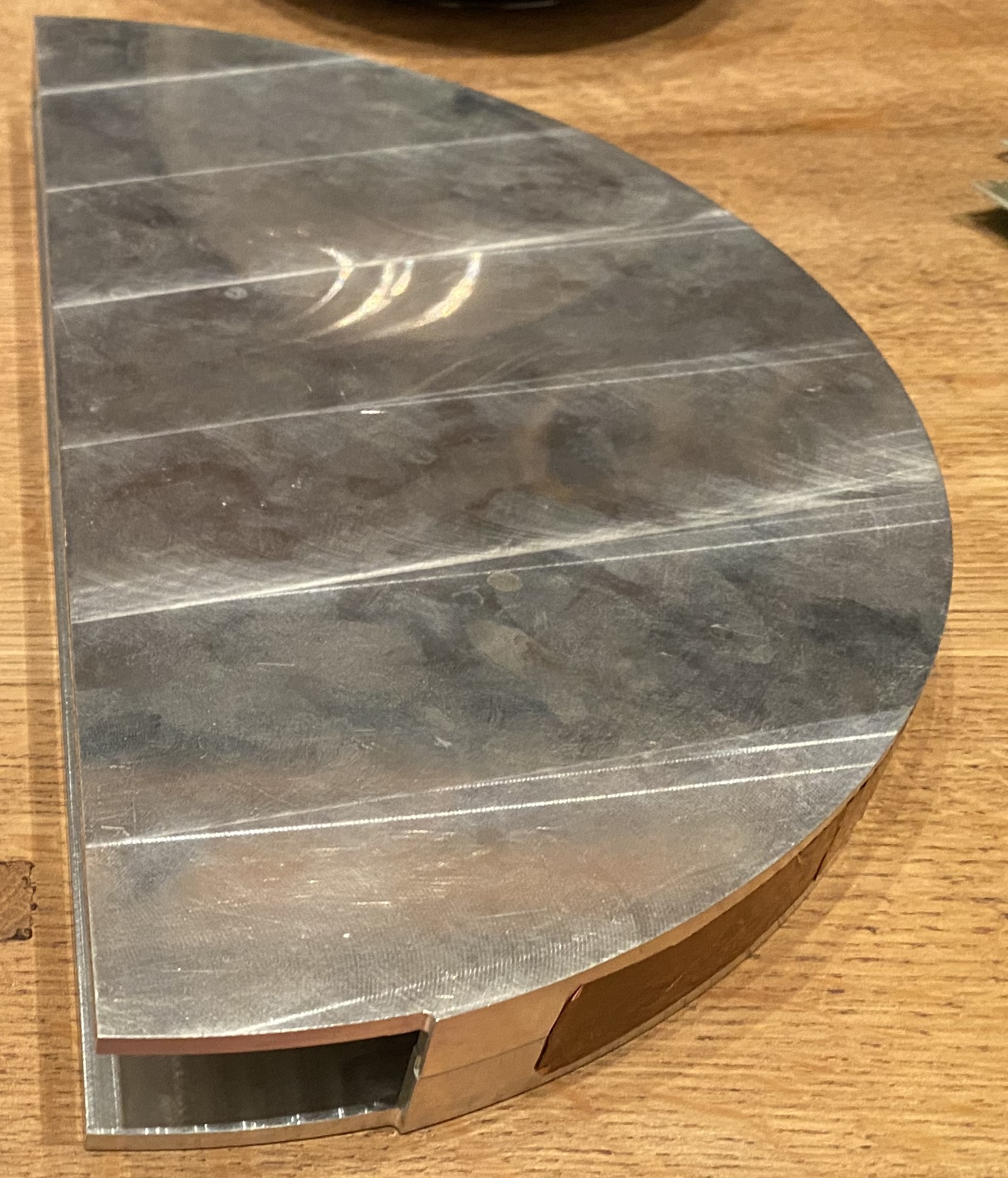RF & Dees
The RF system and cyclotron dees
What are dees?
Dees are the cavities in which the beam circulates. They are hollow “D” shaped segments of a disc, hence the name. In our case, the dees are 14” in diameter and 1” thick with a 0.1” wall thickness and a gap of 1”. Our dees are machined from aluminum. An oscillating voltage is applied to the dees which generates an electric field in the space between the two dees. This field gives the beam a kick when a particle traverses the gap. This is kept in resonance in accordance with the magnetic field.


As shown in the photo above, one of the dees has a small extraction slit in the side. This is not actually useful in the current design because we’ve moved to a “dummy dee” configuration where one of the dees is replaced by a small frame. The beam dynamics are subtly different with this configuration but this allows us to probe the inner orbits where we would otherwise be unable to place a Faraday cup because of the presence of the second dee. This configuration is shown outside of the vacuum jacket below:
Because we’re working with relatively low frequencies (~1.5MHz) we can get away with some relatively insensitive RF engineering. We can make a direct coaxial connection between the RF feed and the dees but because high voltage coax feedthroughs were prohibitively expensive we had to build a coax connector using some copper plumbing components, an SHV (‘safe high voltage’) bayonet connector, and a standard high voltage vacuum feedthrough.